Rotating joints are essential components that facilitate smooth and continuous movement in various mechanical systems. This article provides a comprehensive exploration of rotating joints, starting from a basic introduction to their intricate mechanics and distinct types. It delves into their significant applications across different industries including automotive, manufacturing, and robotics, highlighting innovations that have revolutionized their functionality. Further, it discusses the crucial technical specifications, design considerations that impact their performance and durability, and provides insight into common maintenance and troubleshooting practices. The guide also forecasts future trends and emerging technologies that may influence the design and utility of rotating joints. The conclusion encapsulates the critical role of rotating joints in modern applications and their potential to drive future innovations, making it a valuable resource for anyone involved in selecting or utilizing these pivotal mechanical components.
Introduction to Rotating Joints
The realm of mechanics and machinery is replete with marvels that often go unnoticed in our everyday lives, and among these, rotating joints stand out as pivotal components. Rotating joints, also known as rotary joints, swivel joints, or pivot joints, can be found in the heart of numerous mechanical systems. They serve a critical role by allowing parts connected by them to rotate smoothly around a fixed axis, while transmitting power, fluid, or even data between the connected parts in some cases.
Rotating joints are indispensable in a multitude of applications, creating the very motion required in machinery that shapes our modern existence. The significance of rotating joints transcends a vast array of industries, from allowing the smooth articulation in the robotic arms that assemble automobiles to facilitating the 360-degree rotation of wind turbines capturing wind energy. Within the medical field, they play a crucial role in the movement of precise surgical instruments, making advanced endoscopic procedures possible. The consumer world is equally indebted to these joints, with devices like rotating computer monitors and height-adjustable office chairs enhancing daily productivity and comfort.
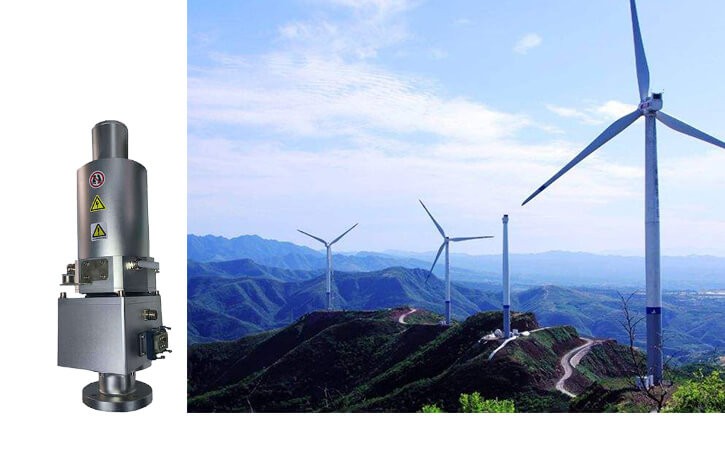
In each of these scenarios, the common thread woven by rotating joints is their ability to sustain continuous motion, endure stress, and often manage the transfer of substances or signals without interruption or leakage – all the while fitting into complex and compact assemblies. The unsung heroism of rotating joints within complex systems brings about a silent revolution in efficiency, and as we venture further into the article, we will explore these aspects in granular detail, using real-world examples to elucidate just how these mechanisms support and drive innovation across our technologically diverse landscape.
As we delve into the subsequent chapters, prepare to embark on a journey that spans the simple office swivel chair to the high-stakes rotation of satellite antennas. We’ll discuss the intricacies of their designs, the challenges of maintenance, and the future frontiers that rotating joints are queuing up to conquer. By the end of this article, you’ll have a newfound appreciation for the dynamic role that rotating joints play in our world, and how, without them, the motion of progress would quite literally come to a standstill.
The Mechanics Behind Rotating Joints
The Fundamental Working Principle of Rotating Joints
At its core, the principle behind rotating joints is elegantly simple, yet its execution is a triumph of engineering. The primary function of a rotating joint is to facilitate uninterrupted rotation between two parts of a machine, while often also bearing load and sometimes transferring utilities like fluids, gases, or electrical signals across the rotating interface. This is achieved through a clever combination of bearings, seals, and sometimes complex internal pathways that maintain a continuous connection despite the movement.
Imagine a garden hose; when you twist it, the hose itself tends to kink, disrupting water flow. A swivel joint in this scenario would allow the end of the hose or the spray gun to rotate freely, preventing kinks and allowing seamless water flow. This basic concept is scaled and adapted in complexity to fit into applications as varied as high-speed manufacturing units to the robotic arms on space stations.
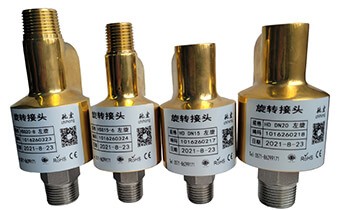
Diverse Types of Rotating Joints and Their Characteristics
Rotating joints come in different shapes, sizes, and configurations, each tailored to serve specific requirements. Here’s a closer look at some common types:
- Ball-and-Socket Joints: Reminiscent of the human shoulder joint, these allow for rotation in nearly all directions. A ball-shaped end of one component fits into a concave socket of another, enabling multi-directional movement. Vehicles commonly use these for suspension and steering systems, allowing wheels to move freely while maintaining control.
- Swivel Joints: These focus on facilitating rotation around a single axis. They are extensively used in hose systems, such as in fuel trucks or fire fighting, where maintaining fluid flow during movement is crucial. The simplistic design ensures durability and ease of maintenance, making them a favorite in demanding environments.
- Rotary Unions: Specialized for transferring liquids or gases while rotating, rotary unions are complex in design. Their applications range from the spindle of a CNC machine, where they cool the cutting tool with fluid, to CT scanners in hospitals, where they manage the transfer of power and data to the rotating scanner assembly.
- Spherical Bearings: While not a joint in themselves, spherical bearings are key components in many rotating joints, providing smooth rotational movement. They are particularly useful in applications that require the joint to handle a combination of radial loads and misalignment.
Each of these rotating joints has been engineered to solve specific rotational challenges. For example, the space rovers exploring the Martian landscape rely on ball-and-socket and swivel joints for navigation and instrumentation articulation, tasked with the challenge of operating in a harsh, unpredictable environment. The precision and reliability of these rotating joints directly influence the success of such missions, showcasing the critical role mechanical design plays in pushing the boundaries of exploration and innovation.
Understanding the types of rotating joints and their mechanics is not just about appreciating their role in complex systems; it’s about recognizing the elegance of engineering solutions to movement and transfer challenges. As we journey through various applications in the following chapters, the ingenuity behind each rotating joint type will become increasingly evident, highlighting their indispensability in both everyday devices and cutting-edge technologies.

Rotating Joints Across Industries: Applications and Innovations
The versatility of rotating joints stretches across numerous industries, each harnessing their capabilities to foster innovation, enhance efficiency, and solve complex engineering challenges. From the automotive sector’s steering mechanisms to the precision movements in robotics, rotating joints are at the heart of many technological advancements. This chapter explores how these seemingly simple components are integral to a variety of sectors, underpinning both everyday conveniences and groundbreaking innovations.
Automotive Excellence Through Rotation
In the automotive industry, rotating joints play a crucial role in enhancing vehicle performance and safety. For instance, the steering system of a car employs a type of rotating joint known as a “universal joint.” This allows the steering wheel to be turned smoothly, translating the driver’s input into precise movements of the car’s wheels. Furthermore, ball-and-socket joints in the suspension system allow for a smooth ride over uneven terrain by enabling the wheels to move up and down and tilt slightly in response to road conditions. These joints must withstand extreme stress and wear, demonstrating the critical balance between durability and functionality that rotating joints achieve.
Precision and Agility in Robotics
Robotics is another domain where rotating joints are indispensable, enabling robots to mimic complex human movements. In industrial robotic arms, various types of rotating joints work in harmony to facilitate precise movements, from simple rotations to complex tasks requiring a high degree of flexibility. These robotic systems often utilize a combination of swivel joints and ball-and-socket joints, each selected for its specific range of motion and load-bearing capacity. The advancements in materials and design have dramatically increased the lifespan and efficiency of these joints, enabling robots to perform high-precision tasks such as assembling intricate electronic devices, painting with meticulous detail, or conducting sensitive surgical procedures.
Manufacturing Innovations Through Rotational Movement
The manufacturing sector has been revolutionized by the introduction of rotating joints in machinery and conveyor systems. Rotary unions, in particular, have transformed processes that require the transfer of fluids or gases while parts rotate or move. For example, in the production of paper, rotary unions are used to heat rollers that dry the paper as it passes through the machine. These unions must maintain a tight seal against high pressures and temperatures, exemplifying the innovation in rotating joint design to meet specific industrial requirements.
Innovations Transforming Rotating Joint Use
Advancements in materials science and engineering have significantly influenced the evolution of rotating joints. The development of self-lubricating composite materials, for example, has extended the lifespan of joints used in harsh environments by reducing wear and eliminating the need for frequent maintenance. This innovation is particularly beneficial in space exploration robots and undersea equipment, where replacing a joint is impractical or impossible.
Moreover, the incorporation of smart technologies into rotating joints has opened new avenues for predictive maintenance and efficiency optimization. Sensors embedded within the joints can monitor their condition in real-time, predicting failures before they occur and ensuring that machinery operates at peak efficiency. This smart innovation not only minimizes downtime but also extends the operational life of the equipment in which these joints are used.
Rotating joints, while seemingly simple mechanical components, underpin a vast array of technological advancements and industry innovations. Through their diverse applications in automotive, robotics, and manufacturing, among others, they play a pivotal role in driving progress. The continuous innovation in rotating joint technology — from the development of new materials to the integration of smart sensors — promises even greater contributions to efficiency, productivity, and capability across all sectors in the future. The exploration of these innovations not only highlights the importance of rotating joints in today’s technological landscape but also inspires future advancements that will further transform industries.
The Technical Details Matter: Specifications and Design Considerations for Rotating Joints
The intricate dance of machine parts in motion is a symphony of precision, where every component plays its part. For rotating joints, the specs and design details are the notes on the score, dictating their performance and endurance. Whether you’re assembling a race car or designing an industrial robot, understanding the key technical specifications and design considerations is critical to ensuring that the rotating joints you select or design will meet the demands of their application.
Key Technical Specifications
Load Capacity: The load capacity of a rotating joint is a critical spec that indicates the amount of weight or force the joint can sustain during operation. For instance, heavy machinery used in construction would require joints capable of handling high radial and axial loads, compared to a computer cooling fan which operates under minimal load.
Range of Motion: A joint’s range of motion specifies the angles through which it can move or rotate. In the design of prosthetic limbs, for example, understanding the joints’ range of motion is essential to mimic the movement of natural limbs closely.
Speed: The maximum rotational speed of a joint is a determining factor in applications such as automotive drivetrains or turbine machinery where components rotate at high velocities.
Material Composition: The materials used in a rotating joint determine its strength, durability, and compatibility with environmental factors like temperature, corrosion, and exposure to chemicals. Aerospace joints may utilize advanced alloys to withstand extreme conditions, whereas food manufacturing may require food-grade stainless steel for safety and cleanliness.
Size and Dimensions: The physical size and geometry must align with the space constraints and integration requirements of the system in which the joint is being used. This is crucial in applications like minimally invasive surgical robots, where size and precision are paramount.
Sealing and Lubrication: Effective sealing techniques are essential to protect the joint from contaminants and maintain lubrication. Lubrication can be manual, automatic, or even designed to be self-lubricating with the use of certain materials or coatings.
Design Considerations for Optimum Performance and Durability
Environmental Adaptability: The operating environment greatly influences design choices. For example, underwater remotely operated vehicles (ROVs) use rotating joints that resist corrosion and withstand pressure, while those used in dusty desert environments must be sealed against particulate ingress.
Service Life and Maintenance Requirements: In applications where maintenance is challenging, such as satellites, joints are designed for long service life and typically require little to no maintenance over their operational period. Ease of replacement or repair can be a design focus for machinery that is more accessible.
Customization for Application: Sometimes, off-the-shelf components don’t fit the bill, and custom-designed joints are necessary. A case study could illustrate how tailored solutions for a wind turbine resulted in joints that could handle variable loads and contribute to efficient energy generation.
Alignment and Tolerance: Misalignment between connected parts can place additional stress on rotating joints, reducing their lifespan. Tolerances must be carefully calculated to ensure proper fit and performance without unnecessary stress or wear.
Integration with Control Systems: In automated systems and robotics, joints are often integrated with sensors and control systems that monitor and adjust their operation. This harmonization is essential for precision tasks and can also help predict and prevent failures.
The technical specifications and design considerations for rotating joints are not merely checkboxes to be ticked off; they represent the nuances that can make or break the performance and longevity of machines and devices across all industries. Whether you’re delving into the design process or making informed purchasing decisions, paying close attention to these details will help ensure that your machinery runs smoothly, efficiently, and effectively.
Through this chapter, we’ve underscored the importance of technicalities in the world of rotating joints, where every micron and every degree of movement is orchestrated with intent. As we continue to push the boundaries of engineering, it is this meticulous attention to detail that will propel us toward even more reliable, innovative, and high-performing mechanical symphonies.
Addressing User Concerns: Maintenance and Troubleshooting of Rotating Joints
In any mechanical system, the difference between seamless operation and frustrating downtime often hinges on the health of its rotating joints. However, these components are not free from issues; they require a regime of maintenance and can sometimes perplex users with unexpected challenges. This chapter demystifies the common concerns surrounding rotating joints, offering a clear pathway for troubleshooting and extending the operational life of these critical components.
Common Issues and Troubleshooting Tactics
Excessive Noise or Vibration: One of the most noticeable signs of trouble in rotating joints is an unusual noise or vibration. This often points to wear and tear or misalignment. A case study in the automotive industry showed that realigning the drive shaft and replacing worn universal joints eliminated vibration and noise, restoring the vehicle’s smooth operation.
Leakage in Hydraulic or Pneumatic Systems: For rotating joints used in fluid or gas transfer, leakage can signal seal failure or material degradation. In a food manufacturing plant, regular inspection allowed early detection of small leaks in rotary unions, preventing potential contamination and costly repairs.
Decreased Movement Efficiency or Stiffness: Over time, rotating joints may become less responsive or harder to move. This change can be due to inadequate lubrication or accumulation of debris. A robotic arm manufacturer reported significant improvement in joint movement after instituting a regular cleaning and lubrication schedule.
Unexpected Wear or Failure: Rotating joints put under inappropriate loads or used in unsuitable environments may fail prematurely. An analysis of a wind turbine joint failure highlighted the importance of correctly specifying joint materials and load ratings to prevent future incidents.
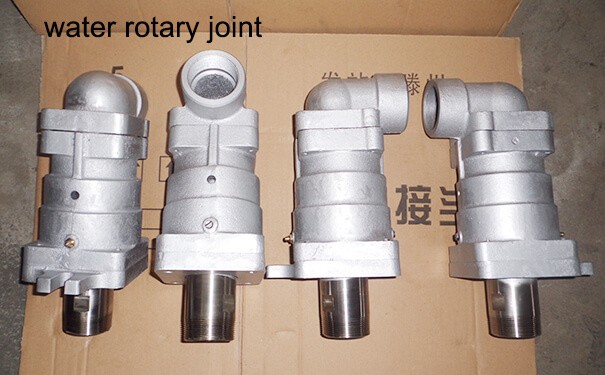
Maintenance Tips for Enhanced Durability
Regular Inspection and Cleaning: Establishing a routine for inspecting and cleaning rotating joints can preempt many common issues. This could involve checking for signs of wear, ensuring seals are intact, and removing any debris or buildup that could impair operation.
Appropriate Lubrication: Selecting the right lubrication and applying it at proper intervals is crucial. For example, a mining equipment company extended the life of its machinery by switching to a better-suited lubricant for its harsh operating environment, significantly reducing joint failures.
Proper Installation and Alignment: Ensuring that rotating joints are correctly installed and aligned can stave off numerous problems. A precision equipment manufacturer emphasized the importance of training its installers on correct installation techniques, thereby reducing the incidence of misalignment-related failures.
Temperature and Environment Management: Operating conditions can severely affect joint health. Implementing cooling systems or protective enclosures, like those used in a chemical processing plant, can mitigate the adverse effects of high temperatures and corrosive atmospheres.
Scheduled Replacement: Some components are designed to be consumable. Recognizing and planning for scheduled replacements can prevent unexpected downtime. A theme park employing rotating joints in its attractions successfully avoided operational interruptions during peak seasons through a predictive replacement program.
A Proactive Approach Is Key
Maintenance and troubleshooting of rotating joints should not be reactive measures taken only when issues arise. Instead, a proactive approach, grounded in regular inspection, appropriate care, and understanding the unique demands of each application, is crucial. This chapter not only highlights common concerns and solutions but also stresses the importance of preventative maintenance in ensuring the longevity and reliability of rotating joints. By integrating these practices, users can enhance the performance of their mechanical systems, reduce the likelihood of unforeseen failures, and ultimately achieve a higher level of operational efficiency and effectiveness.
The Future of Rotating Joints: Trends and Emerging Technologies
As the demands on mechanical systems evolve, so too do the components at their core. Rotating joints, fundamental to the operation of countless machines and devices, are no exception. This chapter explores the cutting-edge trends and technologies poised to redefine the capabilities and applications of rotating joints. By understanding these developments, engineers and designers can not only prepare for the future but also harness these innovations to solve today’s challenges more creatively and efficiently.
Current Trends Influencing Rotating Joints
Integration with IoT and Smart Technologies: Current the integration of rotating joints with Internet of Things (IoT) technology represents a significant shift toward predictive maintenance and enhanced operational efficiency. For instance, sensors embedded in industrial machinery joints can monitor wear and tear in real-time, predicting failures before they occur and reducing unplanned downtime. A notable example comes from the shipping industry, where smart monitoring systems on ship propeller shafts provide data on joint performance, allowing for timely maintenance and adjustments.
Sustainability and Eco-Friendliness: As industries strive for greater sustainability, there is an increasing push for rotating joints that minimize environmental impact. This includes not only energy-efficient designs but also the use of recyclable or biodegradable materials. An automotive manufacturer recently showcased a prototype vehicle with biodegradable joint components, highlighting the potential for such innovations to reduce waste and environmental footprint.
Enhanced Durability and Lifespan: The pursuit of longer-lasting rotating joints is driving advances in materials science and design methodologies. Aerospace and defense applications, where reliability is paramount, often spearhead these developments. The use of novel alloys and surface treatments has led to joints capable of enduring extreme conditions without degradation, exemplified by the new generation of satellite solar panel hinges designed for extended space missions.
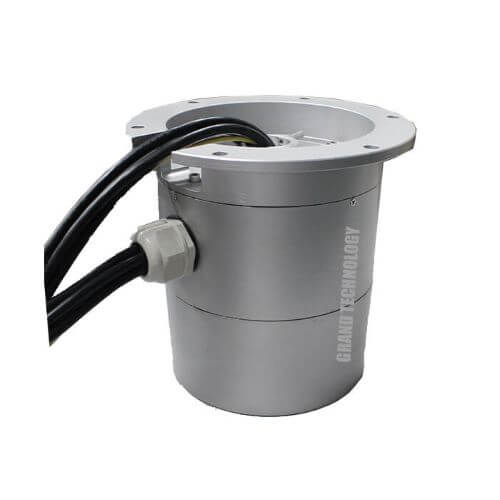
Emerging Technologies and Materials Shaping the Future
Self-Healing Materials: One of the most exciting developments in the field is the advent of self-healing materials capable of automatically repairing damage or wear. These materials, when used in rotating joints, could dramatically extend service life and reduce maintenance requirements. Laboratory tests have shown promising results, with certain polymer-based compounds being able to repair cuts and wear autonomously.
3D Printing and Additive Manufacturing: The rise of 3D printing technology has opened up new possibilities for custom and complex joint designs. Additive manufacturing allows for the production of components with internal structures or geometries impossible to achieve with traditional methods, leading to joints with improved performance or reduced weight. A groundbreaking case involved the use of 3D-printed titanium joints in a high-performance sports car, achieving unmatched strength-to-weight ratios.
Nanotechnology and Advanced Coatings: Nanotechnology offers the potential to enhance the surface properties of rotating joints, reducing friction, wear, and the need for lubrication. Advanced coatings, incorporating nanoparticles or unique molecular compositions, can provide extraordinary resistance to wear, temperature, and corrosion. An industrial robot manufacturer recently adopted nanocomposite coatings for its articulating joints, resulting in significantly lower maintenance costs and higher precision.
Embracing Innovation for a More Dynamic Future
The future of rotating joints is a landscape rich with innovation, marked by the convergence of smart technologies, sustainability, and groundbreaking materials science. These developments promise not only to enhance the performance and longevity of rotating joints but also to open up new possibilities for their application across all sectors of industry and technology. As we look forward, it becomes clear that the rotating joint, a seemingly simple component, stands at the heart of mechanical innovation, driving progress in ways we are only beginning to imagine. It’s an exciting time for engineers, designers, and innovators who are ready to explore these advancements and apply them to the challenges of today and tomorrow.
Choosing the Right Rotating Joints: A Buyer’s Guide
The diversity of rotating joints available on the market is a double-edged sword. On one hand, it ensures that there’s likely a perfect joint for every conceivable application. On the other, it introduces complexity into the selection process, often leaving buyers mired in specifications and options. This chapter endeavors to clarify this process, providing a structured approach to selecting the right rotating joint, and addressing the most common concerns and frequently asked questions.
Factors to Consider in Selection
Application Requirements: Begin with a thorough analysis of the application. Consider the medium (air, water, hydraulic fluid, etc.) passing through the joint, as well as temperature, pressure, and rotational speed requirements. For example, a rotating joint used in a high-pressure steam application in power plants will have different requirements compared to one used for air in a lightweight robotic arm.
Material Compatibility: The materials used in rotating joints must be compatible with the operating environment and media. For instance, joints in the food and beverage industry often require stainless steel or food-grade materials to prevent contamination and corrosion. Similarly, applications involving corrosive chemicals may need joints made from special alloys or plastics.
Size and Integration: The physical size and method of integration into the existing system are critical. This includes connection types (flange, threaded, etc.), dimensions, and the space available for installation. A case in aerospace shows the importance of this factor, where compact, lightweight joints with specific mounting configurations are necessary due to space constraints.
Durability and Maintenance Needs: Consider the expected lifespan and maintenance requirements. Some applications may favor a rotating joint with easily replaceable components or one that offers superior durability and longer service intervals, minimizing downtime. Our examination of mining equipment highlights the preference for rugged, durable joints capable of withstanding harsh conditions with minimal maintenance.
Common Concerns and Queries
Cost vs. Quality Dilemma: One prevalent concern is navigating the balance between cost and quality. While budget constraints are real, the lowest upfront cost is not always the most economical choice in the long run. The tale of a maritime company that initially opted for cheaper, lower-quality joints only to face frequent failures and replacement costs underlines the importance of considering total lifecycle costs.
Understanding Specifications: Many users find interpreting technical specifications challenging. Creating clear, annotated diagrams and providing easy-to-understand spec sheets, like a manufacturer did for a complex multi-port rotary union, can significantly aid in understanding and ensure the selected joint meets all application requirements.
Reliability and Supplier Reputation: The reliability of a rotating joint and the reputation of its supplier are often cited concerns. Seeking supplier references, reviewing case studies from similar applications, and conducting small scale testing when possible can provide reassurance. A solar energy company shared its positive experience with a thorough vetting process, leading to the selection of highly reliable rotating joints for their solar trackers.
Delivery Times and Support: Especially for custom or specialized rotating joints, delivery times can be a significant consideration. In addition, post-sale support for installation, troubleshooting, and maintenance is crucial. An instance occurred in the automotive industry where quick delivery and excellent support from the chosen supplier were critical in meeting project deadlines and ensuring the successful deployment of a new assembly line.
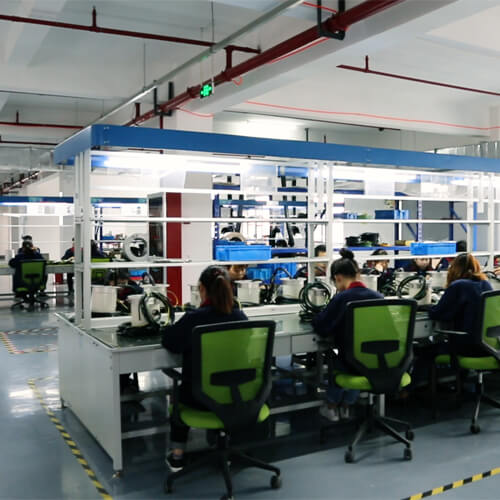
Informed Choices Lead to Successful Applications
Selecting the right rotating joint is a task that demands attention to detail, an understanding of application requirements, and a strategic approach to balancing cost with quality. By considering the factors outlined and addressing common concerns, buyers can make informed decisions that contribute to the efficiency and reliability of their systems. Remember, the aim is not just to choose a rotating joint, but to select a solution that enhances overall system performance, ensuring smooth operation and longevity.
Get Detailed Specifications on Our Rotating Joints. Contact Us!
The Ever-evolving World of Rotating Joints
As we’ve journeyed through the detailed exploration of rotating joints, from their foundational role in a myriad of machines to the cutting-edge innovations shaping their future, it’s evident that these components are far more than mere mechanical conveniences. They are, in fact, pivotal elements that drive efficiency, innovation, and sustainability across diverse applications and industries. In this concluding section, we recap their significance and peer into the potential future, where rotating joints continue to contribute to technological advancements and operational efficiencies.
Recap of the Importance in Modern Applications
Rotating joints, the unsung heroes of mechanical systems, enable crucial movements and functionality across sectors including aerospace, automotive, renewable energy, and manufacturing. Through real-world examples, we’ve seen how these components are essential in applications ranging from the precise control needed in robotic arms to the robust performance required in industrial machinery and the enduring reliability demanded in aerospace mechanisms. A rotating joint is not merely a piece of hardware; it is a key enabler of motion, efficiency, and innovation.
Take, for example, the wind energy sector, where rotating joints play a critical role in transferring hydraulic fluids in wind turbine pitch and yaw mechanisms. Their reliability directly impacts the efficiency and durability of turbines, highlighting the critical nature of these components. Similarly, in advanced manufacturing, rotating joints are indispensable in the automation systems that drive precision, speed, and flexibility on the production floor.
The Future Potential Across Industries
Looking forward, the potential for rotating joints to further drive innovation and efficiency is boundless. As industries push for greater sustainability, energy efficiency, and smarter systems, rotating joints are set to evolve in tandem, leveraging new materials, smarter designs, and integration with emerging technologies.
Integration with Smart Systems: With the advent of the Internet of Things (IoT), rotating joints are becoming increasingly intelligent. Embedded sensors and smart monitoring capabilities allow for predictive maintenance, reducing downtime and extending the lifespan of equipment. Imagine a future where rotating joints in industrial applications self-diagnose wear and schedule maintenance, streamlining operations and optimizing performance.
Advancements in Material Science: The development of new materials and surface treatments offers exciting possibilities. Self-healing materials, for instance, could drastically reduce the need for maintenance, while advanced composites may yield lighter, stronger, and more efficient rotating joints. Consider the aerospace industry, where every gram saved contributes to fuel efficiency and environmental sustainability. Here, advanced materials in rotating joints could have significant impact.
Customization through Additive Manufacturing: 3D printing is set to revolutionize the design and production of rotating joints, enabling the creation of complex, customized solutions that were previously unfeasible. This could lead to highly optimized rotating joints tailored to specific applications, improving performance and efficiency. An example is the potential for bespoke joints in robotic surgery systems, where precision and compatibility with human tissue are paramount.
Envisioning the Road Ahead
The future of rotating joints is intricately tied to the broader trends in technology and industry. As we demand more from our machines—in terms of efficiency, sustainability, and capabilities—the role of rotating joints becomes ever more critical. They are not merely pieces of the machine but are central to the evolution of technology itself.
In navigating this ever-evolving landscape, the ingenuity and creativity of engineers, designers, and industry professionals will be paramount. Through embracing innovation, focusing on sustainability, and leveraging new technologies, the potential for rotating joints to contribute to advancements across various industries is not only promising but pivotal.
As we conclude our exploration, it’s clear that the story of rotating joints is far from complete. Rather, we stand on the brink of exciting developments, poised to witness these essential components propel us toward a more efficient, sustainable, and innovative future. The world of rotating joints, much like the machines they enable, continues to rotate towards new horizons, driving progress in every turn.
See What We Can Do
